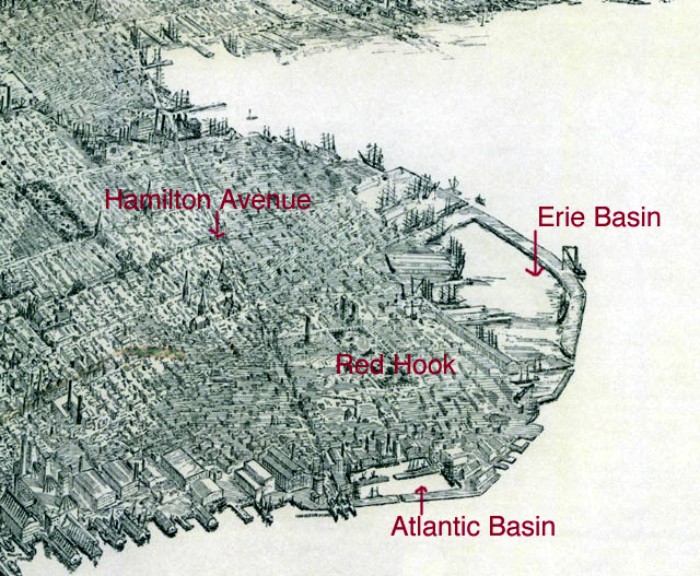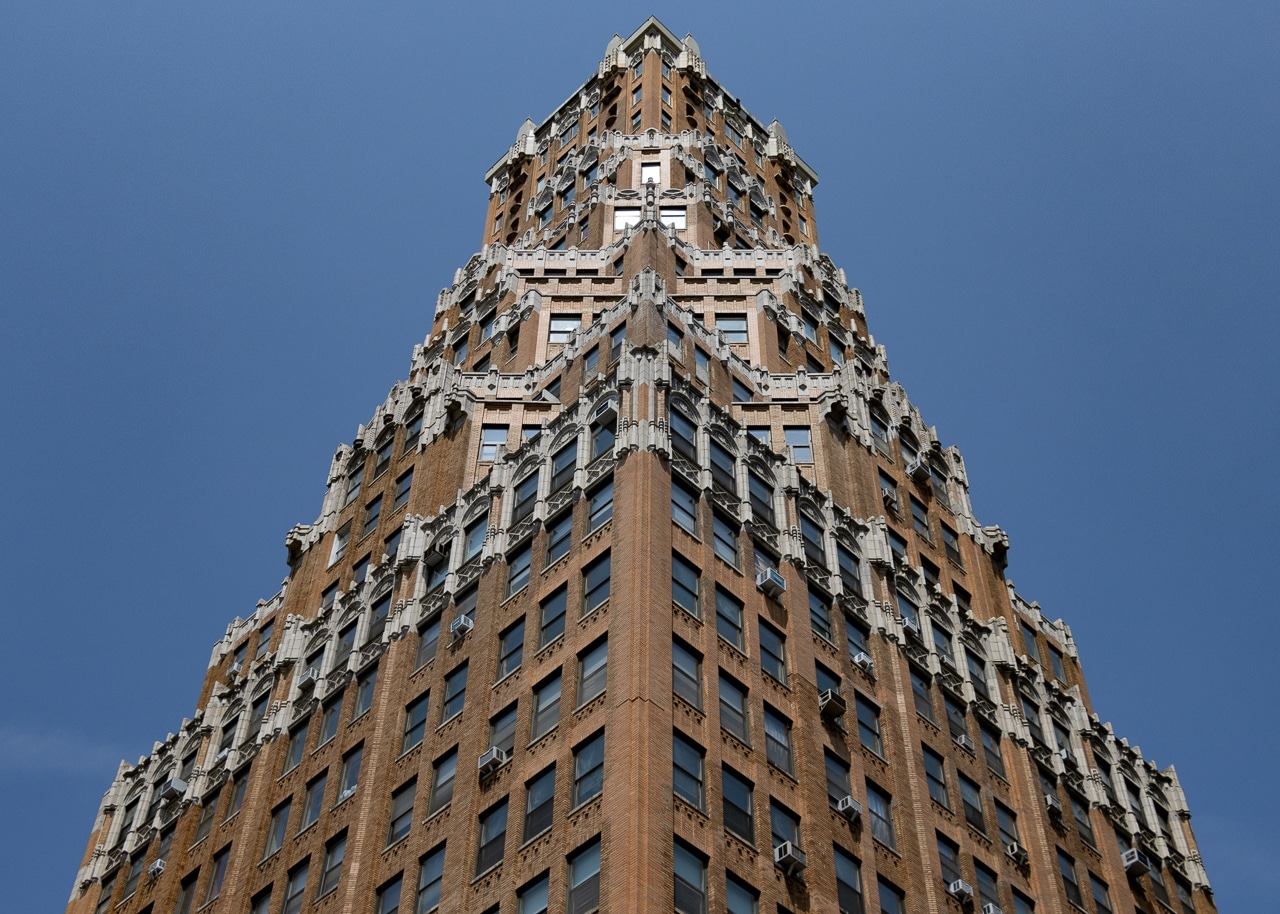The History of King Cotton and the Red Hook Stores
A trip to the Red Hook Fairway may be your excuse to visit the iconic warehouses of Red Hook, but once you are there, stop for a moment and look around. You are looking at American and international history. It’s a story of how these Red Hook warehouses—or “stores,” as they used to be called—were the conduit between…
A trip to the Red Hook Fairway may be your excuse to visit the iconic warehouses of Red Hook, but once you are there, stop for a moment and look around.
You are looking at American and international history.
It’s a story of how these Red Hook warehouses—or “stores,” as they used to be called—were the conduit between the cotton fields of the South and the textile mills of upstate New York and New England. And it’s the story of how an Irish immigrant not only made his fortune, but gave Red Hook its shape.
This is the story of King Cotton, and its connection to Brooklyn.
The cotton gin, and the spinning jenny, change everything
Cotton was a natural species in the southern United States, and was grown well before the American Revolution. But separating the seeds from the fibers had to be done by hand, and took time, so cotton production was not particularly lucrative or prolific — even with slave labor — until Eli Whitney invented the cotton gin in 1793.
Southern cotton fields during slavery, with overseers.
The “gin,” short for engine, was a box that had revolving teeth and a stationary comb. Cotton was fed into it, the handle controlling the teeth was turned, and the fibers were separated, with the seeds falling to the bottom. It was so simple, but it changed everything.
Where an individual could seed a pound of cotton in an hour by hand, the gin allowed them to seed 50 pounds in the same amount of time. Cotton was now a highly lucrative crop. Cotton production went from less than 200,000 bales in 1800, to 4 million bales by 1860.

Over in England, the spinning jenny was invented in the 1760s, soon powered by water, and later steam. Like the cotton gin, this invention enabled spinning thread for weaving to go from a cottage industry to huge mills and factories. England’s mills were soon producing cotton fabric used for everything from sails to underwear. Due to a ban on Indian cotton, they needed American cotton. By 1860, 75% of their cotton came from American plantations.
Here in America, many of the English weavers had come to the United States and were instrumental in developing the cotton mills of New England and upstate New York. These mills also totally relied on Southern cotton.

William Beard and his man-made harbor
Cotton was jokingly referred to as New York’s largest crop. The bankers, brokers, and shippers were all in New York City. The largest storage warehouses for cotton were in Red Hook, Brooklyn.
The completion of the Erie Canal in 1825 opened up markets in New England and to the Midwest and Canada. Grain, hides and other materials came down the canal to be stored in the warehouses of Red Hook, while goods like cotton could go upriver to the mills upstate.

In 1851, an Irish immigrant named William Beard began building the Erie Basin, a man-made extension of the harbor, and home to a series of protected piers and docks.
Beard, who was born in 1806, came to the United States in 1825, when he was 19. He built railroads for a number of years, and during that time became interested in the other great transportation method of the day – shipping.
The Brooklyn Docks below the Heights, and the Atlantic Docks in South Brooklyn were already developed. Beard and his partners bought land and got permission to build around the bend in Red Hook. His shipping basin would be called the Erie Basin, because this was where the canal boats finished their journeys. This was not only the end of the Erie Canal; it was also where ships from all over the world docked.
Mr. Beard was a smart man. Since many ships carried stone as ballast when they sailed empty, he paid them to dump their ballast in the marshy harbor. Through dredging and building up the ballast and existing landmass, he soon had bulkheads creating a protected basin upon which he built dry docks, piers and massive storage warehouses.

The Red Hook Stores
The Red Hook Stores, or W. Beard & Robinson Stores, was built in 1869. Along with the other stores in the Erie Basin belonging to Beard, it was up and running by the early 1870s. The Erie Basin quickly became the busiest of the Brooklyn harbors.
The Red Hook Stores is a five-story industrial building built to protect fragile goods. As such, the outside walls are four and five feet thick, with two foot thick walls between the sections. It is supported by thick yellow pine columns fitted into cast iron shoes, which in turn, support over 20 foot long girders.
The large arched windows were built to facilitate loading, and the now-iconic metal shutters would be closed to prevent damage to the goods from the elements. All of the materials used to build the stores were locally sourced from manufacturers and merchants in the Red Hook/Gowanus area.
The stores were leased to the New York Warehousing Company. They first used them to store cotton, coffee, sugar, hides, wood used in dyeing, and molasses. But by the late 1870s, they were only storing cotton. Tons and tons of cotton.
The cotton fires
Raw cotton is very flammable. It was prone to spontaneous combustion, and would also catch fire easily if any flame was nearby for other reasons. Over the years, tons of cotton in the NY Warehousing Stores caught fire.

One fire was in 1876, when bales of cotton in a lighter boat docked next to the Stores caught fire. It soon spread to the dock and to another lighter, those small craft used to transfer goods from ships to the piers. Fire fighters were able to get the lighters away from the dock and throw the cotton overboard, but it was a close call.
In 1893, the NY Warehousing Stores building caught fire when lightning hit one end. Over 8,000 bales of cotton were in the warehouse. Damages to the building were $20,000. The cotton was valued at $80,000.
In 1894, spontaneous combustion ignited the warehouse. There were 6,000 bales of cotton in the warehouse. Firemen were able to put the fire out, saving much of it.
In 1901, yet another fire began in the NY Warehousing Stores. This time, the thick inner walls did their job, preventing the fire from spreading. Compartment “C,” on the top floor was consumed, but the rest of the building and its contents did not ignite.
The Brooklyn Eagle reported that over 30,000 bales of cotton were in all three sections. Firemen concentrated on keeping the fire in C, where all contents were destroyed. It could have been much worse. We wouldn’t be shopping in Fairway, or living above it, today, had they not been so diligent.
All of these fires created a new industry – picking out the unburnt cotton. Hundreds of women and children were employed to pick the good cotton out of the charcoal produced by the fires. The unburnt cotton was packed and shipped overseas or upstate to recycling mills in Troy and elsewhere that produced “shoddy,” an inferior grade of cloth made from rags, cutting scraps and scorched cotton.
The New York Warehousing Company was the only Brooklyn company to specialize in storing only cotton. Other stores, such as the German-American Stores nearby, also stored cotton, but they stored other merchandise, too. NYWC had three piers, all with enormous storage warehouses.

The end of an era
Throughout most of the remainder of the 19th century, most cotton was headed north, to the textile mills of Massachusetts, New Hampshire and to Cohoes and Troy, NY. But that too, was changing. With a powerful labor movement at work in the North, manufacturers began building textile factories further south, where labor costs were less. The Northern mills began going under. England had long before turned to India and Egypt for its cotton, and was no longer a major importer.
It didn’t happen all at once, but as the 20th century progressed, the cotton shipments to Brooklyn’s stores began to diminish and then ended. The railroads became cheaper and more prolific, but it was the building of the interstate highway system and the growth of trucking that killed it.
Never again would King Cotton control this part of the waterfront the way it did between the 1870s and 1910.
Top photo by Suzanne Spellen













What's Your Take? Leave a Comment